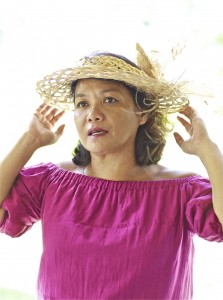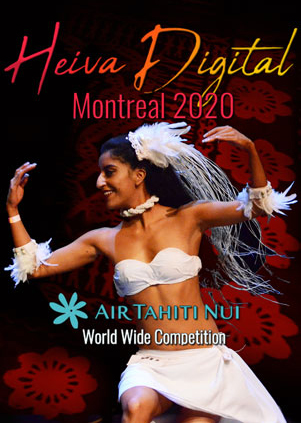Merehau Konohi Teavai-Anastas
Born in Papeete in 1962, I came from a family that originated in East Tuamotu. I was raised in the Tahitian town of Faa’a.
My island roots of pa’umotu have been an extraordinary influence on my life; they led me on this quest for the meanings concealed in the first texts collected by navigators at the beginning of the 19th century.
After completion of my secondary education, I began to study Polynesian languages at the National Institute for Eastern Languages and Civilizations. It was at this institute that I discovered the magic world of languages, language systems, semiological fields, double articulation of language, but above all, the power of spoken words, the power of their bearer, and the purity of the one that receives them.
During my years of cooperation with the GIE Tahiti, whose mission was to promote the Tahitian black pearl, I resorted to oral traditions in order to give a meaning and a cultural depth to the product “Tahitian pearl.” This proved to be an exercise in style.
“Poe,” the Tahitian name for the northern star, jewel of light that exists within the luminous night of eternity…
 Separate from my work with the GIE Tahiti, I cooperated with dance groups at the Heiva festivals and various other events in order to create unique performances, which allowed me an opportunity to pursue my passions.
Separate from my work with the GIE Tahiti, I cooperated with dance groups at the Heiva festivals and various other events in order to create unique performances, which allowed me an opportunity to pursue my passions.
What other than Orero could better give life to words in their journey of becoming lyrics? What other than Pupu Himene could better chant this precise chapter of our collective memories, what other than Pupu Ori could better restore the meaning of the forgotten elements?…
I served as the writer for the “O Tahiti E” performance in 1999. I wrote the theme of the show “Te Pakerere,” niau weaving, which is the profane version of the tapaka and the niau shroud… The group secured a first place victory.
In 2004, the economic interest group Perles de Tahiti produced Te Roimata o Oro, “The Tear of Oro,” a theatrical performance that took place in a small ballet formation with 12 artists also from “O Tahiti E.” This theatrical creation was continuously presented on many stages throughout the world at various pearl promotion events.
These two works are built upon many ancient references. In viewing these two performances, the audiences receive an opportunity to witness the reappearance of objects such as the “paau” of the Austral Islands, the “Pakerere” of Tuamotu, the “Kanaenae de Oro”, which is a moon pectoral in nacre, along with the restoration of vegetable matter such as the kere haari, the niau, as well as all other elements of the coconut palm tree.
Joelle’s work with rhythm, movement, and especially the body position and postures used in the execution of Ori Tahiti dance has allowed experimentation in the field of investigation involving what we pompously call Polynesian oral literature.
It is here that we begin to understand the significance of Joelle’s reasoning: to experiment, to analyze, and finally to resort to natural tools provided by the Tahitian language when experimentation protocol reveals signs of a forgery.














